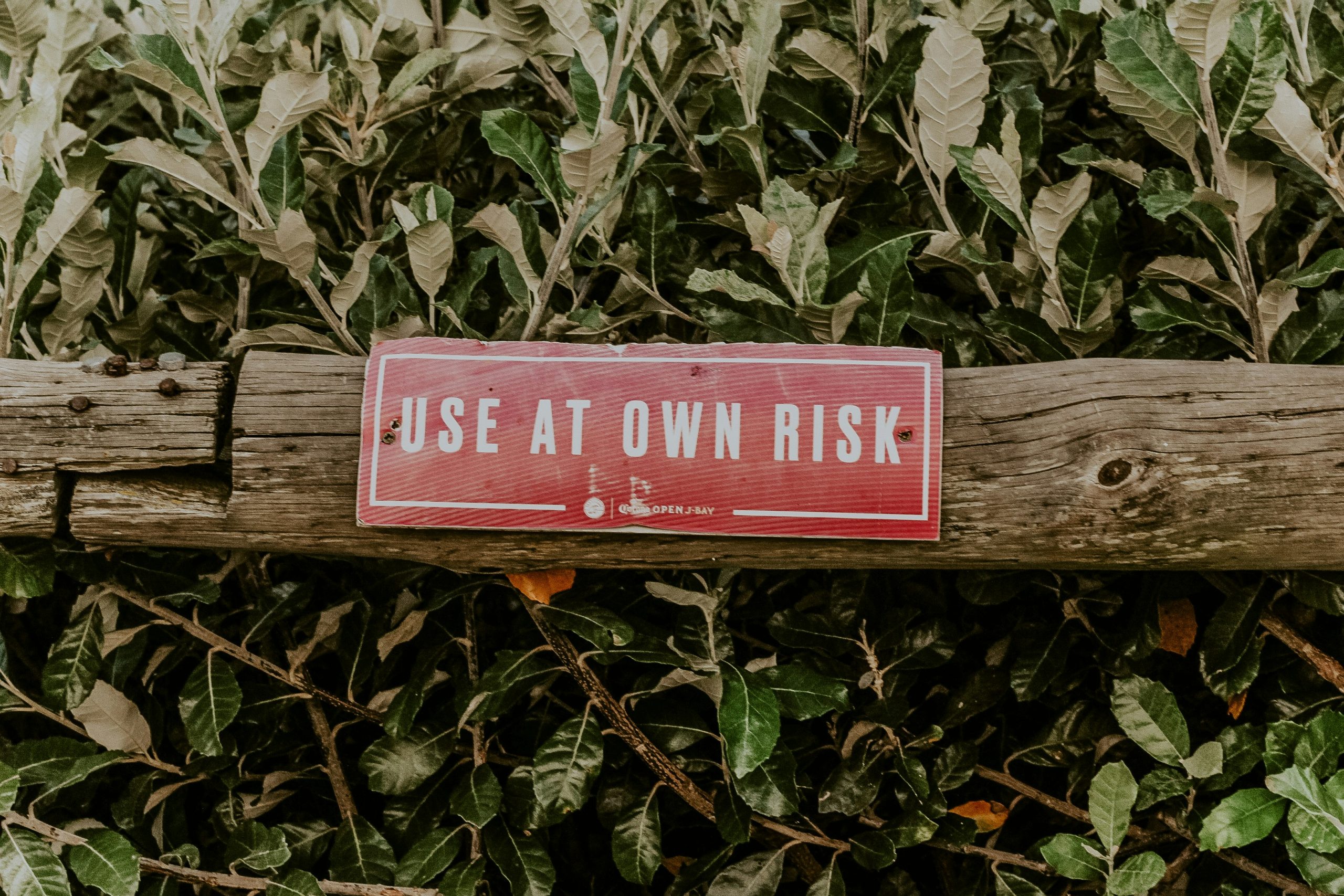By janilson furtado (https://unsplash.com/photos/red-and-white-wooden-signage-AhAGyHoYqB0)
No kidding. There I was, working with a small company that serviced hot tubs in the Northwest. Some years before, they wrote their own software to manage their business because there wasn’t anything available that would meet their unique needs. Later, they began selling and supporting that software. Before long, they began to get requests from customers and prospects for a SOC2 report.
That’s where I came in. During my initial interview, I started asking about the last risk assessment that was conducted. It was clear that they did not understand what I was asking for. I switched from auditor to educator and began explaining the importance of risk management. I walked them through their initial exercises and started them on their way.
This scenario is all too common. Most of the companies I’ve worked with do not understand the importance of risk management or the true benefits that can be found when performed correctly. Risk management is usually non-existent in small businesses.
SMBs (Small-medium businesses) are the backbone of the economy, accounting for over 99% of all businesses in the United States. However, they also face unique challenges and risks that can threaten their success.
That’s why implementing a risk management plan is crucial for them. This article will explore the importance of risk management for small businesses and how it can help achieve business resilience and security.
What is Risk Management?
Risk management can be defined as the systematic process of identifying, assessing, prioritizing, and mitigating risks that may affect the achievement of organizational objectives. Ok, what does that mean?
Basically, it gives a company a way to address the things that keep them up at night. It is important that everyone understands the risks that are presented. Everyone should be aligned in the approach taken. This involves a structured approach to understanding and addressing uncertainties that could impact an organization’s success, profitability, reputation, or even its very existence.
Risk management aims to anticipate potential threats and opportunities, allowing businesses to make informed decisions and take proactive measures to manage or capitalize on them. This process involves the following steps.
Identifying Risks
by baona (https://www.istockphoto.com/portfolio/baona)
The first step in risk management is identifying potential risks. The guidance available will tell you to consider risks such as natural disasters, cyber-attacks, supply chain disruptions, financial risks, etc. This is true. Those are very important, but it doesn’t need to stop with the generic topics that seem to affect everyone.
There are unique risks that need to be highlighted that may only apply to your unique business. Consider evaluating more abstract internal factors such as employee turnover, lack of training, or inadequate processes.
A classic example would be the super employee or guru—that one person who knows how everything works and has become the go-to resource for the organization. Consider for a moment that the person (hit by a bus is the most common analogy) is no longer available. What impact would that have on your organization? That is a risk and an all-too-common one at that.
Several ways exist to identify potential organizational risks. Consider conducting internal surveys, interviewing stakeholders, analyzing customer complaints, and consulting industry experts. Simple brainstorming exercises such as “What keeps you up at night?” will normally inspire many ideas.
It is a good idea to have a list of company assets available. You should always consider the risks to assets and their dependencies. This type of information can be pulled from a Business Impact Analysis.
Assessing Risks

Photo by Cristofer Maximilian on Unsplash
Once risks have been identified, the next step is to assess their potential impact on the business. This involves determining the likelihood of the risk occurring and the potential consequences if it does.
For example, a small business may identify a cyber attack as a potential risk. They would then assess the likelihood of a cyber attack and the potential financial and reputational damage it could cause.
Company A provides cleaning services to other businesses and may not consider a cyber attack to be very impactful or likely. Company B may process medical insurance claims. A cyber attack on them could be disastrous.
Controlling Risks

After identifying and assessing risks, the next step is to control them. This involves creating a plan to mitigate or prevent the risks from occurring.
For example, a business may implement cybersecurity measures to prevent a cyber attack (like utilizing a firewall on its network) or create a disaster recovery plan to mitigate the impact of a natural disaster. It is important to note that controls often come with costs.
Ultimately, the Board of Directors is held responsible when such issues occur. It is very important that they are made aware of the risks that were identified and the controls that were chosen to mitigate them. It is up to the Board to accept risks if they choose not to implement the control.
Highlight accepted risks in an executive summary report for the board to approve. They need to understand that they are responsible for these risks. Later assessments can address them again to see if they are willing to reconsider.
Conclusion
In today’s ever-changing business landscape, small businesses face numerous risks that can threaten their success. By implementing a risk management plan, small businesses can protect their finances and operations, achieve business resilience, and ensure business continuity. With the right strategies in place, small businesses can mitigate potential risks and focus on growing their business.

